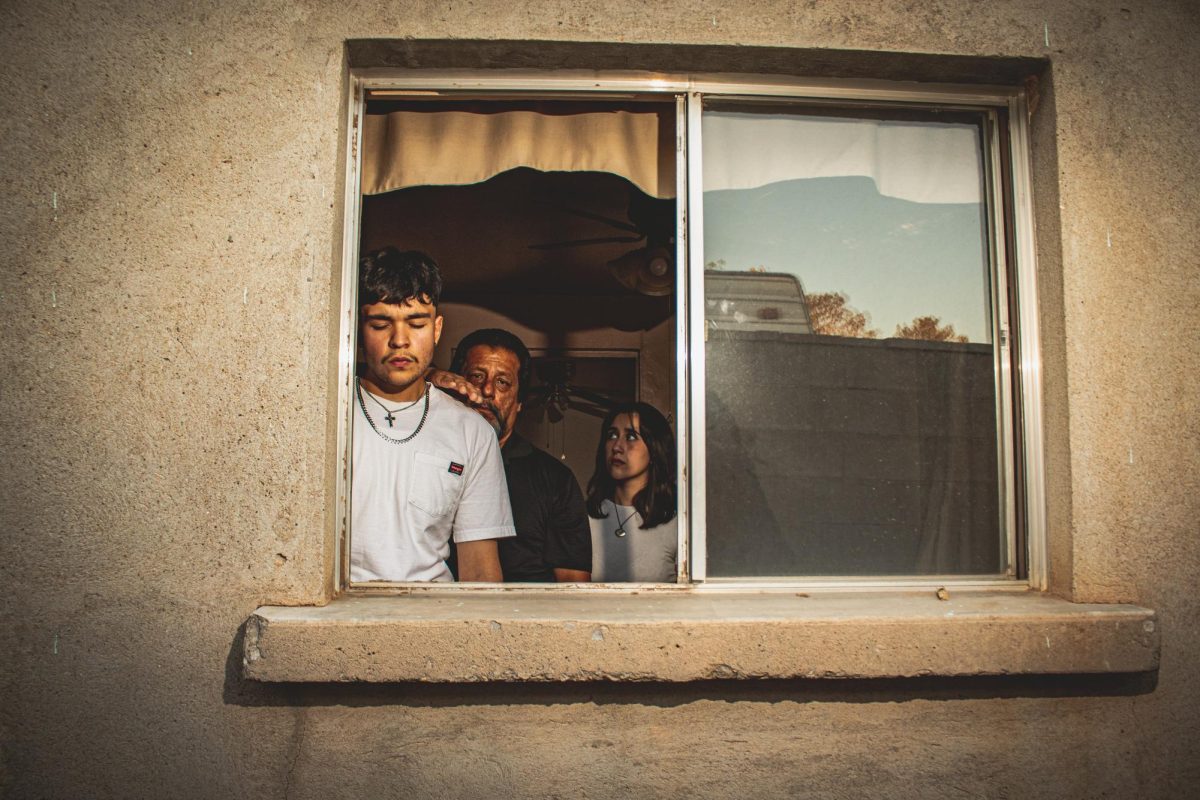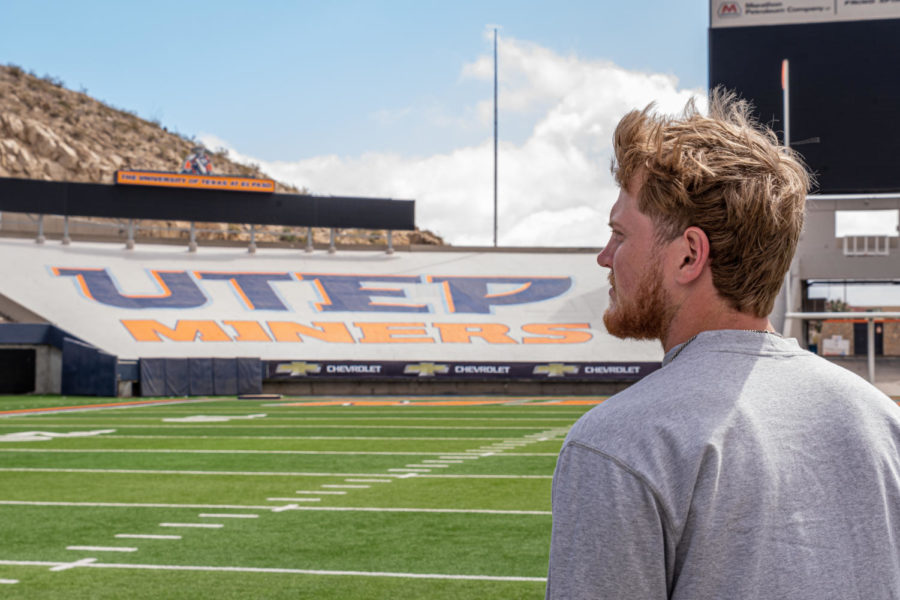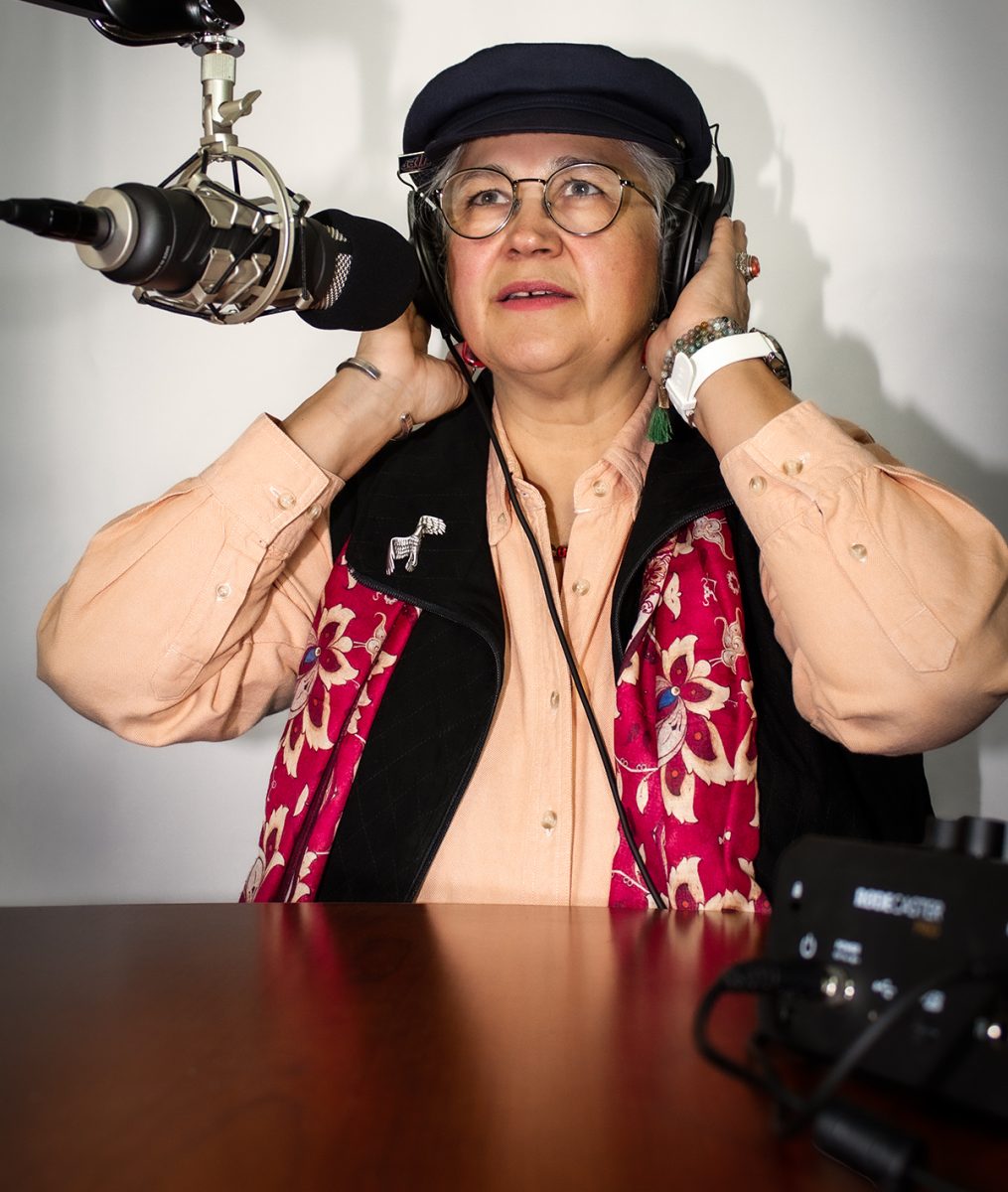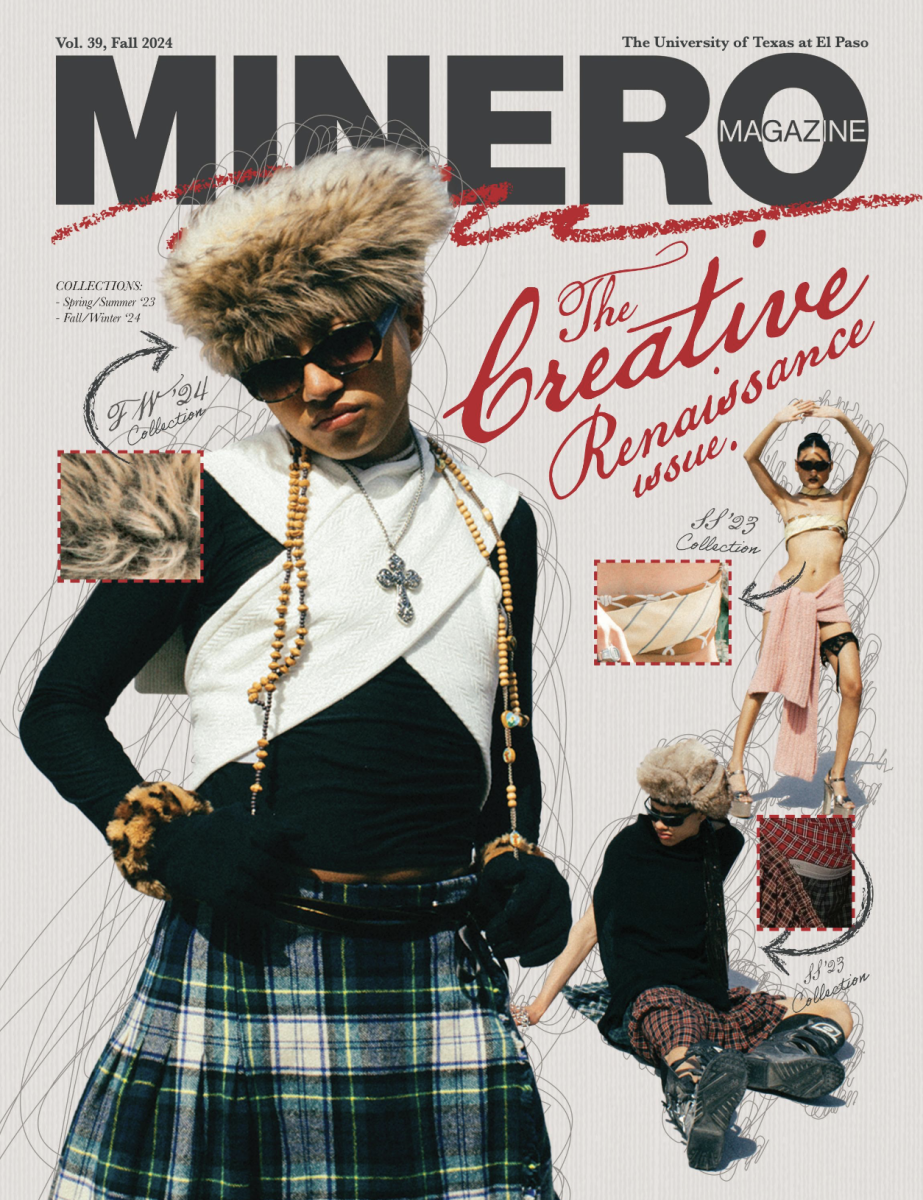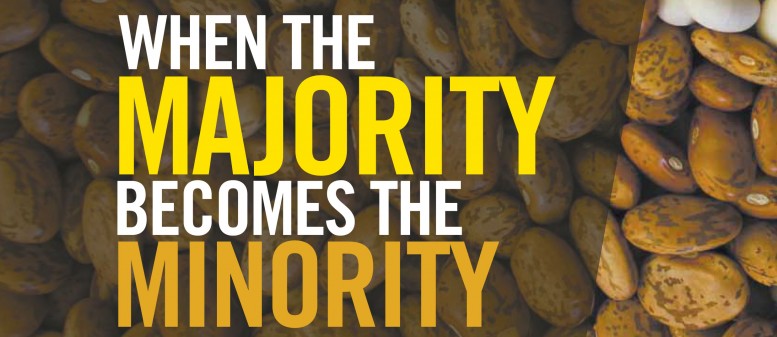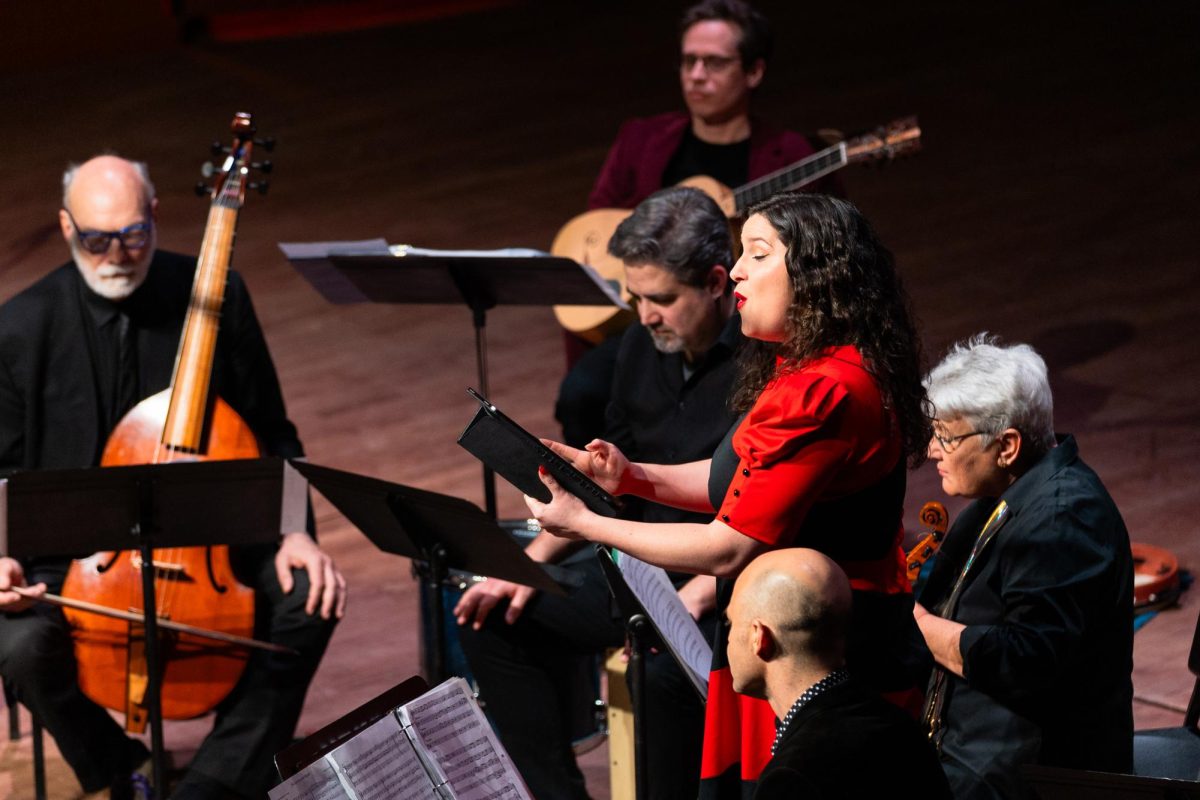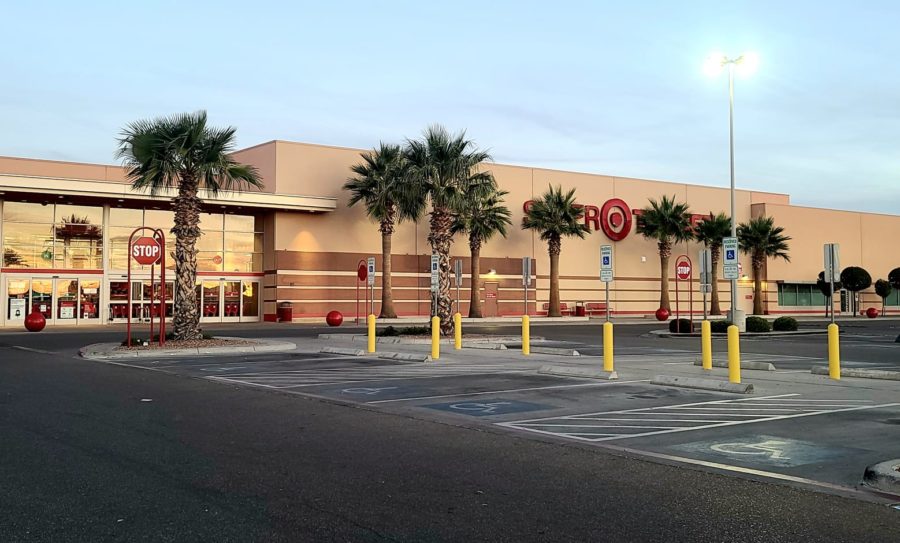By Andrés Rodríguez
Editor’s Note: Jacob Wendell contributed to this story.
Courtney Carpenter began to wake up with an upset stomach and a knot in her throat after taking her first job, at the age of 15, as a swimming instructor at Leo Cancellare Memorial Pool in West El Paso. Courtney had always loved kids and swimming, but there was one kid who just couldn’t understand her instructions.
“My very first class, I had a little boy about 3 or 4 years old who only spoke Spanish,” says Courtney, who had moved from Kokomo, Indiana, two years before to El Paso with a limited knowledge of Spanish. “I tried to tell him to sit on the ledge, to get the message through to him, but every time I would turn to another student, he’d suddenly run behind me and into the deeper areas of (the) pool. He just didn’t understand, or didn’t respect me because he couldn’t understand what I was saying. It kind of sucks when your language barrier lets a 3-year-old think he’s above you.”
For eight years, Courtney lived in El Paso as part of the 13.1 percent Anglo minority, among an 82.2 percent Hispanic majority. Courtney says that this phenomenon definitely made El Paso a different world. The city’s Hispanic to Anglo ratio is an unusual one in the United States, whose population is 72.4 percent Anglo and only 16.3 percent are of Hispanic or Latino origin, according to the 2010 U.S. Census Bureau. The bureau also states that between 2000 and 2010 there was a 43 percent increase in the Hispanic population, and given this increase, they project the Hispanic population will constitute 30 percent (132.8 million) of the country’s population by the year 2050.
Upon arriving to El Paso, Courtney went through a major cultural shift. “It’s so difficult moving from somewhere where absolutely everyone speaks English to a city where almost everybody speaks Spanish and some people speak no English at all,” Courtney says. “It was always a little frustrating and made me feel sort of left out when I’d be around friends who would speak Spanish. It feels like it must be a hassle for them sometimes too, when they have to repeat entire conversations back to me.”
Similarly, Eric Alls, an African-American, experienced a sort of cultural shock when he first arrived in El Paso at the age of 18. He came to El Paso after being advised by a high school coach to look for a university elsewhere than his hometown of Dallas, Texas. He attended UTEP for two years where he played football, before finishing a business degree at Southern Methodist University in Dallas.
“Oh crap, what did I get myself into,” says Eric, who is now 25, about his initial reaction when he realized that for the next three years he would live in a city where the majority of the population spoke Spanish and saw him as a 6’, 2’’ giant. At UTEP, the demographic shift in the student population over the past 30 years is even more pronounced than the city’s. In 1980, 47 percent of the student population was Anglo, while 42 percent of its students were Hispanic. In 2010, UTEP’s student population more closely reflected the community with 77.5 percent of its population being Hispanic and 9.4 percent Anglo.
“It was totally different,” Eric says. “The first thing I noticed when I first came out there (El Paso) was how everybody treated everybody. It was the hospitality. I had barely known people and I had them and their mothers welcome me into their homes–their moms cooking me a nice meal. That’s one thing that I liked about El Paso.”
He experienced being a true minority, as African Americans make up only 3.1 percent of El Paso’s population, while the country’s African-American population reaches nearly 13 percent and 22.3 percent in his hometown of Dallas.
Eric says he found it easy to assimilate into Hispanic culture because, much like the African-American culture, Hispanics care about family and are proud of their heritage. Still, his lack of Spanish made it a problem to communicate, especially after he began dating a Mexican-American El Pasoan, whose mother speaks only Spanish. “You have to learn at least the basics (of Spanish),” he said. “We have to find a way to communicate.”
The city’s Hispanic-majority population has been in place for quite some time, but the gap between the non-Hispanic white people and Latinos has steadily increased over the last 30 years. In 1980, the Anglo population in El Paso was as high as 32 percent, while the Hispanic population was at 60 percent.
Dennis Bixler-Marquez, UTEP director of Chicano Studies, says the gap has widened due to each population’s economic standing.
“The reduction of the white population, which has a higher social economic status, is due to lower birth rates and greater opportunities to be educated elsewhere and subsequent employment out of El Paso,” says Bixler-Marquez, whose research focuses on immigration patterns in the borderland. “Many Hispanics have left for similar reasons, but the Hispanic population in El Paso has traditionally been restocked by immigration, higher birth rates and cultural residential patterns that encourage those remaining in El Paso to maintain proximity to relatives and friends.”
The city’s proximity to Mexico and Ft. Bliss also factor into Bixler-Marquez’s conclusion. “Mexico has always made El Paso an immigrant station. Many immigrants from Mexico end up staying because they find a linguistic and cultural environment in which they can thrive,” Bixler-Marquez says. “The transformation of Ft. Bliss into a major infantry and armor base has increased the number of whites and blacks in the region. Ft. Bliss has traditionally given El Paso an international flavor with the old air defense school that trained people from NATO, SEATO and allied countries, some of whom remained in El Paso.”
Tiffany Gailey, an Anglo El Paso native, also struggles to communicate with the Spanish-speaking population. As a cashier at Old Navy, Tiffany deals with customers that she says just don’t understand her on a daily basis. She says that there is always a customer who becomes upset at her limited understanding of Spanish. “I can understand a little bit of Spanish, but can’t speak it at all. I always have trouble with this at work when I’m helping customers who don’t speak English,” Tiffany says. “In those situations, I have to find a co-worker to translate for me, but sometimes customers have a real bad attitude toward the whole thing.”
Tiffany, a UTEP sophomore psychology major, says this happens too often. “Some people just expect you to know it (Spanish) and they get mad when you don’t,” she says.
Courtney says that, although she struggled with the language, she found the dominant Hispanic culture big on spirit. “Although we have family get-togethers up here in Indiana, it is absolutely nothing compared to the craziness that my Hispanic friends and their families usually create,” she says. “It’s nice though, that everyone’s so close. I always like going to my friends’ family parties because everyone is friendly and open. It’s usually loud and fun and there’s a lot of laughter.”
Courtney, who now lives in Indianapolis, Indiana, says moving to El Paso has made her more tolerant and open to learning new things. “Living in a city where I’m constantly learning new things definitely made life more interesting, at the very least, and that was one of my favorite things about living there,” she says. “Now, in Indiana, I get to impress all of my friends with my wicked Spanish skills, even if the most impressive thing I can do is ask if they want to apply for a (store) credit card. Though, to this day, I still haven’t hit a piñata; I have to say I’m a little disappointed at that.”
EN BREVE
Vivir en un lugar en donde se es la minoría no es fácil. En El Paso, cuidad en la que un 13.1 por ciento de la población es anglosajona, los hispanos son la mayoría.
Para Courtney Carpenter, originaria de Kokomo, Indiana, mudarse a El Paso fue un reto. Sin hablar español y de origen anglosajón, Courtney admite que El Paso es un mundo diferente. “Es tan difícil cambiarse de un lugar en el que absolutamente todos hablan inglés a una ciudad en la que casi todos hablan español y algunas personas ni siquiera hablan inglés en lo absoluto”, dice Courtney.
Mientras que a nivel nacional los anglosajones conforman un 72.4 por ciento de la población total y los hispanos un 16.3 por ciento, en El Paso los hispanos constituyen un 82.2 por ciento. Es así que la cuidad ofrece un contexto cultural y social distinto y a veces, difícil de asimilar para aquellos que no son hispanos, como Eric Alls, un joven afroamericano proveniente de Dallas, quien estudió en UTEP por dos años. Eric admite que al mudarse a El Paso, sufrió impacto cultural.
La cercanía de El Paso a México es uno de los factores más importantes que contribuyen a la amplia presencia de hispanos en la región. Dennis Bixler-Marquez, director del Departamento de Estudios Chicanos en UTEP, asegura que México ha convertido a El Paso en una estación inmigratoria. “La población hispana en El Paso ha sido preservada por la inmigración y por los patrones culturales que animan a aquellos que se encuentran en la cuidad a mantenerse en un lugar cercano de sus familiares y amigos”, dice Bixler-Marquez.








